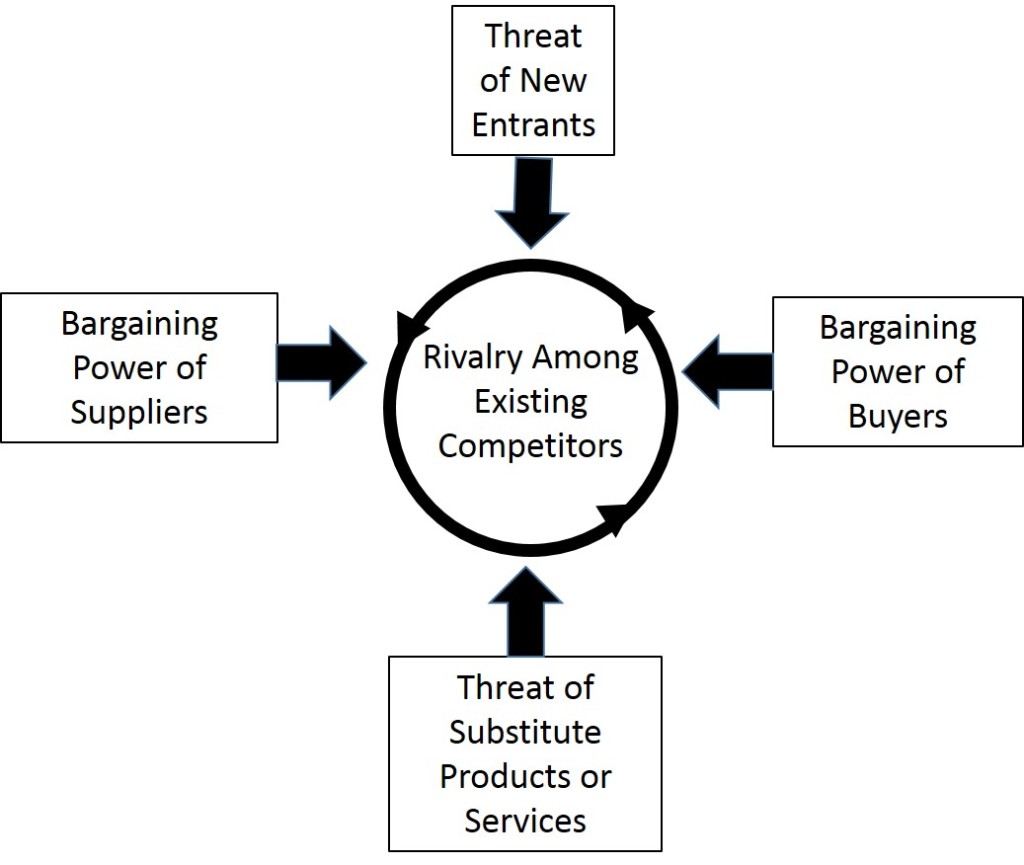Definition: Porter’s five forces model, refers to a
framework based on the competitive analysis, introduced by Harvard Business
School Prof. Michael E. Porter. The model determines the intensity of
competition in any industry is a mix of five competitive factors operating in
different areas of the whole market.
The framework is an outside-in strategy tool for the
business unit that evaluates the attractiveness (profitability) of an industry.
Thus, helps the business-persons to identify existing and potential lines of
business.
It is a useful tool for accurately diagnosing important
competitive elements in the market, as well as determining the strength and
significance of each five forces.
Threat Of New Entrants: Potential entrant is the
major source of competition in the industry. The product range, quality,
capacity, etc. brought by them, increases competition. The size of the new
entrant plays a major role here, i.e. the bigger the entrant, the more intense
is the competition. Moreover, the prices are slashed, and the overall
profitability of existing players is also affected, by the new entry.
It analyses the ease of entry to the new market, i.e. if
the entry is easy, then the level of competition in the industry is severe.
Bargaining Power Of
Suppliers:
Suppliers, also exert substantial bargaining power over the firms, by
threatening to increase prices or degrade quality. They are likely to exercise
power if:
§ The number of suppliers in
the industry is limited in number.
§ They offer the specialized
product.
§ The supplier’s product is
an important input, to the buyer’s product.
§ The product has a few
substitutes.
Thus, the factor analyses bargaining power of industry
suppliers, which directly affects the profitability, i.e. the higher the cost,
the lesser is the profitability.
Bargaining Power Of
Customers:
The market of outputs, i.e. the customers have the ability to compete with the
supplying industry and put the companies under pressure, by forming groups or
cartels. This force not only affects the prices but also influences the
producer’s cost and investments in certain circumstances, as the powerful
buyers influence producers to offer better quality which involves cost and
investment.
Buyer groups are likely to exercise power if, they are
concentrated, products are homogeneous, the switching cost is low, and full
information is available.
Threat From Substitutes: It is the quiescent source
of competition, present in the industry. They are the key cause of competition
in many industries. Substitute products are offered at reasonable prices along
with high quality, to the customers can radically change the competitive
scenario of industry, especially, when the introduction is sudden.
Rivalry among current
players:
Last but not the least, is the rivalry among current players, which is all that
is known as competition. It can be shown in a number of ways such as:
§ Price competition
§ Advertising battles
§ New introductions
§ Improving quality
§ Increasing consumer
warranties.
So, this factor analyses, how ruthless the competition
is, by identifying the existing player and marketing down their moves and
activities. The competition is said to be acute when, there are a few sellers,
offering similar products to the customers because it is easy for buyers to
switch to the one offering product at low prices.
Therefore, the model is all about taking offensive and
defensive actions, to create and maintain a competitive position in the market
and to cope with the challenges (five forces) successfully.



